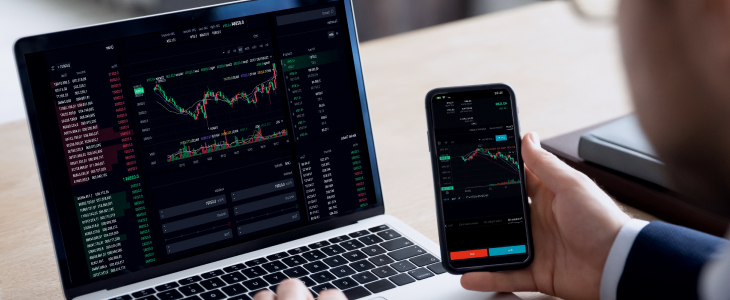
The Ultimate Guide to Forex Currency Trading Online
Forex currency trading online has rapidly gained popularity among both novice and experienced investors. With the advent of technology and digital platforms, trading currencies has never been more accessible. Whether you want to diversify your investment portfolio or take advantage of currency fluctuations, this guide will walk you through the essential aspects of online forex trading. If you’re looking for a comprehensive platform to enhance your trading experience, check out forex currency trading online Best Trading Apps.
What is Forex Trading?
Forex, or foreign exchange, refers to the large-scale trading of currencies on the global market. Different countries have different currencies, and the value of one currency against another can fluctuate based on various factors, including economic indicators, geopolitical events, and market sentiment. Traders buy a currency pair, speculating that the value of the first currency (the base currency) will increase or decrease relative to the second currency (the quote currency).
The Basics of Currency Pairs
In forex trading, currencies are quoted in pairs. For example, if you are trading the EUR/USD pair, it means you are looking at the value of the Euro relative to the US Dollar. The first currency listed is known as the base currency, while the second currency is the quote currency. Currency pairs are typically categorized into three groups:
- Major Pairs: These include the most traded currencies such as EUR/USD, USD/JPY, and GBP/USD.
- Minor Pairs: These are less commonly traded pairs, such as EUR/GBP and AUD/NZD.
- Exotic Pairs: These involve a major currency paired with a currency from a developing market, like USD/TRY (Turkish Lira) or USD/ZAR (South African Rand).
Understanding Market Analysis
To succeed in forex trading, you need to understand the two main types of market analysis: fundamental and technical analysis.
Fundamental Analysis
Fundamental analysis involves studying economic indicators, news releases, and reports that can affect currency values. Key indicators include:
- Interest rates: Central banks set interest rates that influence economic growth and currency strength.
- GDP: Gross Domestic Product reflects a country’s economic health.
- Employment figures: High employment usually signals a strong economy.
- Inflation: Central banks watch inflation closely to adjust monetary policies.
Technical Analysis
Technical analysis uses historical price data and chart patterns to predict future price movements. Traders use various tools to analyze price actions, such as:

- Charts: Line, bar, and candlestick charts represent price movements.
- Indicators: Moving averages, RSI, and MACD provide additional insights into market trends.
- Support and resistance levels: Identifying resistance and support can help traders make crucial entry and exit decisions.
The Importance of a Trading Strategy
Having a well-defined trading strategy is critical for success in forex trading. Here are some popular strategies that traders use:
- Scalping: This strategy focuses on making small profits from minor price changes in short periods.
- Day Trading: Day traders buy and sell within one trading day, avoiding overnight risk.
- Swing Trading: Swing traders hold positions for several days or weeks, targeting shorter-term trends.
- Position Trading: This long-term strategy is based on fundamental analysis and often involves holding positions for months or years.
Choosing the Right Trading Platform
The choice of trading platform significantly impacts your trading success. When selecting a platform, consider factors such as:
- User interface: Ensure the platform is user-friendly, especially if you are new to forex trading.
- Fees and commissions: Look for platforms with competitive spreads and fees.
- Customer support: Reliable customer service can help when you encounter issues.
- Tools and resources: Look for platforms offering educational resources, charting tools, and market news.
Risk Management in Forex Trading
Risk management is essential to protect your trading capital. Here are some tips for managing risk:
- Use stop-loss orders: These orders automatically close your position at a predetermined price to limit losses.
- Set take-profit levels: These orders close your position once a specific profit target is reached.
- Diversify your trades: Don’t put all your eggs in one basket; diversify across different currency pairs.
- Never risk more than you can afford to lose: A general rule is to risk no more than 1-2% of your trading capital on a single trade.
Final Thoughts
Forex currency trading online offers tremendous opportunities for profit, but it also comes with risks. By understanding the fundamentals of the forex market, developing a solid trading strategy, and managing your risks effectively, you can improve your chances of success. Continuous learning and adapting to market conditions will serve you well in this exciting and dynamic trading environment.
Start Your Trading Journey Today
In conclusion, forex trading is a thrilling endeavor that requires dedication, knowledge, and effective strategies. With the right resources and tools, you can embark on your forex trading journey and work towards achieving your financial goals. Be sure to practice with a demo account before trading with real money to gain confidence and experience.